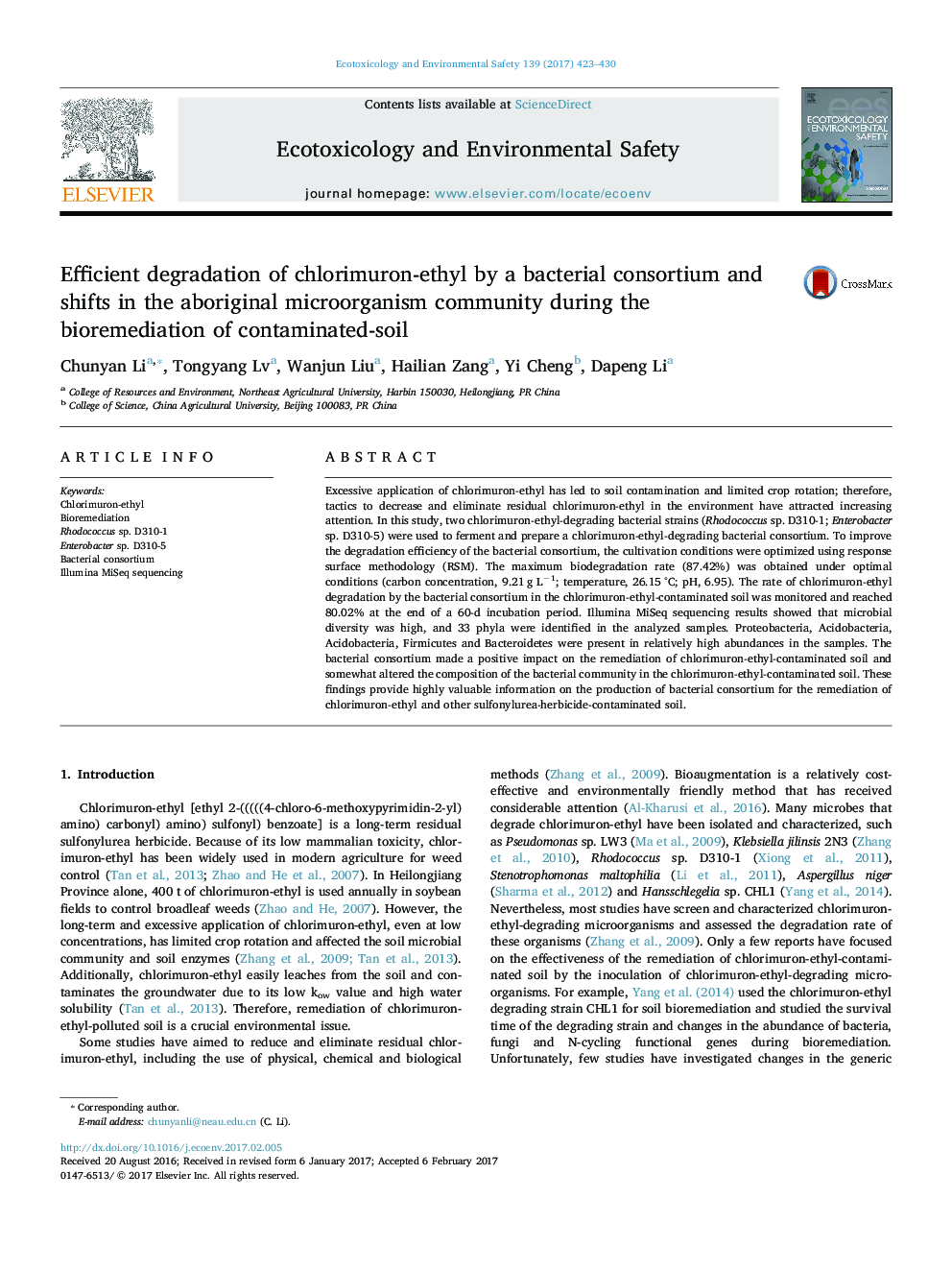| Article ID | Journal | Published Year | Pages | File Type |
|---|---|---|---|---|
| 5748036 | Ecotoxicology and Environmental Safety | 2017 | 8 Pages |
Abstract
Excessive application of chlorimuron-ethyl has led to soil contamination and limited crop rotation; therefore, tactics to decrease and eliminate residual chlorimuron-ethyl in the environment have attracted increasing attention. In this study, two chlorimuron-ethyl-degrading bacterial strains (Rhodococcus sp. D310-1; Enterobacter sp. D310-5) were used to ferment and prepare a chlorimuron-ethyl-degrading bacterial consortium. To improve the degradation efficiency of the bacterial consortium, the cultivation conditions were optimized using response surface methodology (RSM). The maximum biodegradation rate (87.42%) was obtained under optimal conditions (carbon concentration, 9.21 g Lâ1; temperature, 26.15 °C; pH, 6.95). The rate of chlorimuron-ethyl degradation by the bacterial consortium in the chlorimuron-ethyl-contaminated soil was monitored and reached 80.02% at the end of a 60-d incubation period. Illumina MiSeq sequencing results showed that microbial diversity was high, and 33 phyla were identified in the analyzed samples. Proteobacteria, Acidobacteria, Acidobacteria, Firmicutes and Bacteroidetes were present in relatively high abundances in the samples. The bacterial consortium made a positive impact on the remediation of chlorimuron-ethyl-contaminated soil and somewhat altered the composition of the bacterial community in the chlorimuron-ethyl-contaminated soil. These findings provide highly valuable information on the production of bacterial consortium for the remediation of chlorimuron-ethyl and other sulfonylurea-herbicide-contaminated soil.
Related Topics
Life Sciences
Environmental Science
Environmental Chemistry
Authors
Chunyan Li, Tongyang Lv, Wanjun Liu, Hailian Zang, Yi Cheng, Dapeng Li,
